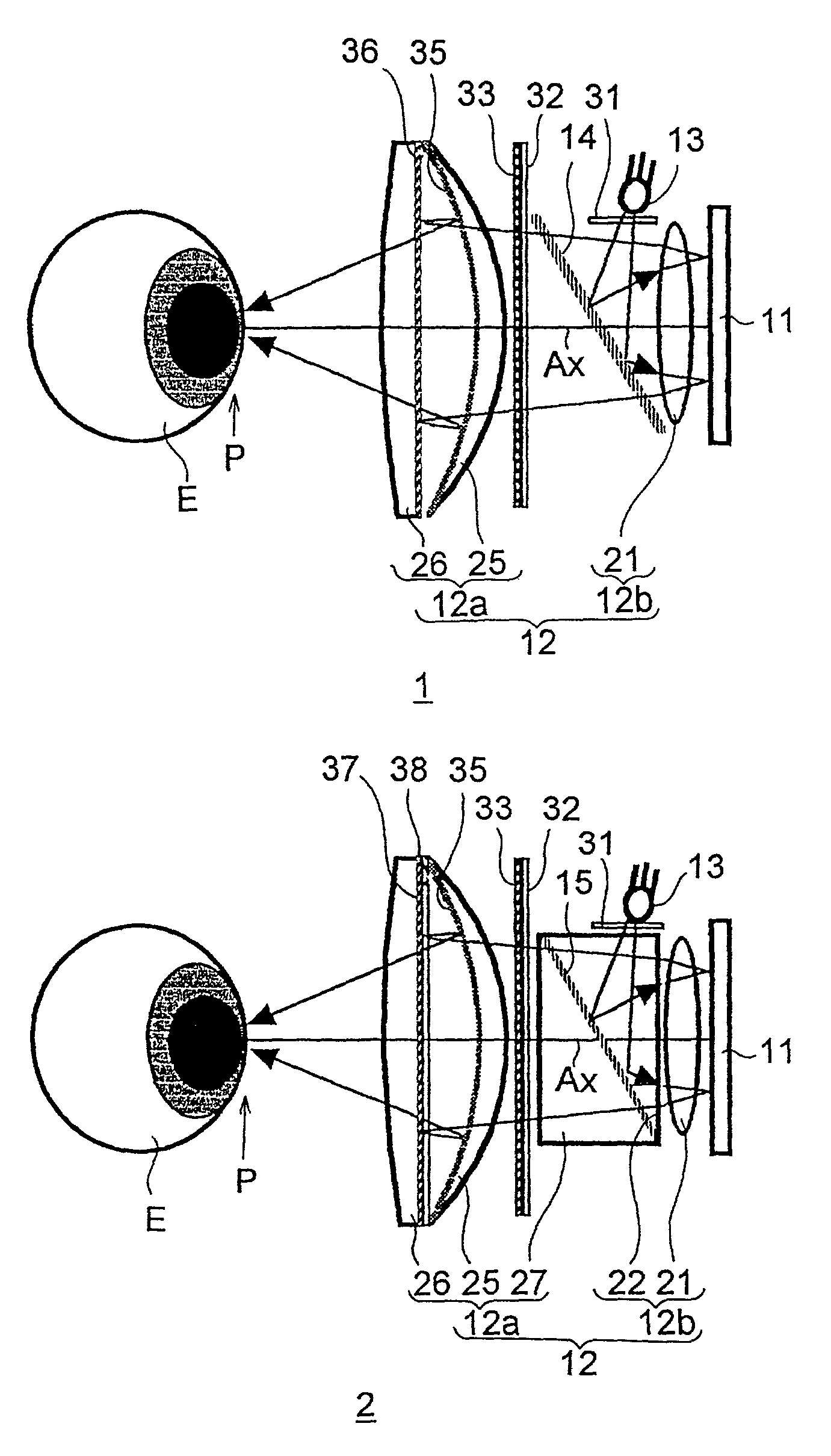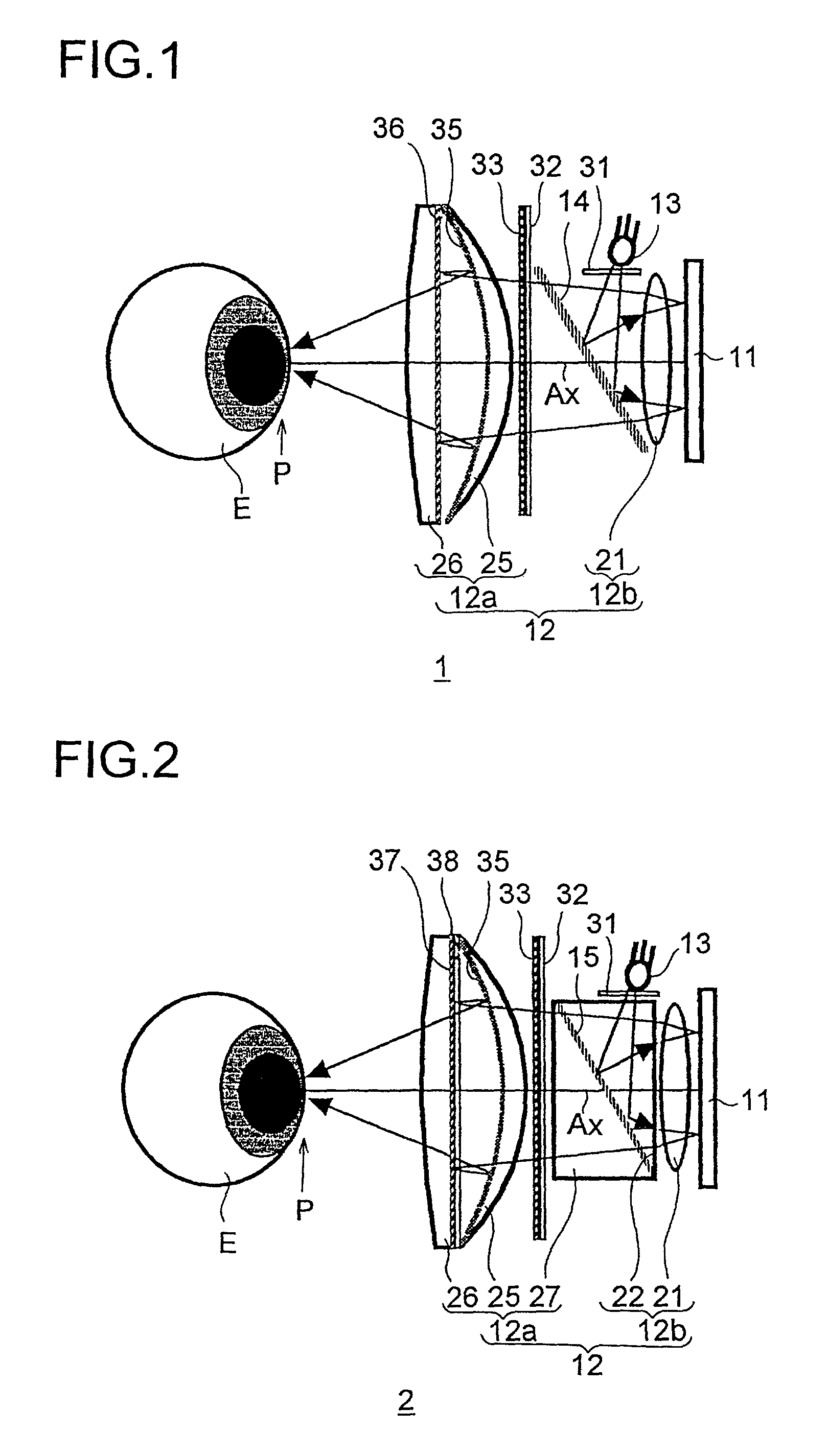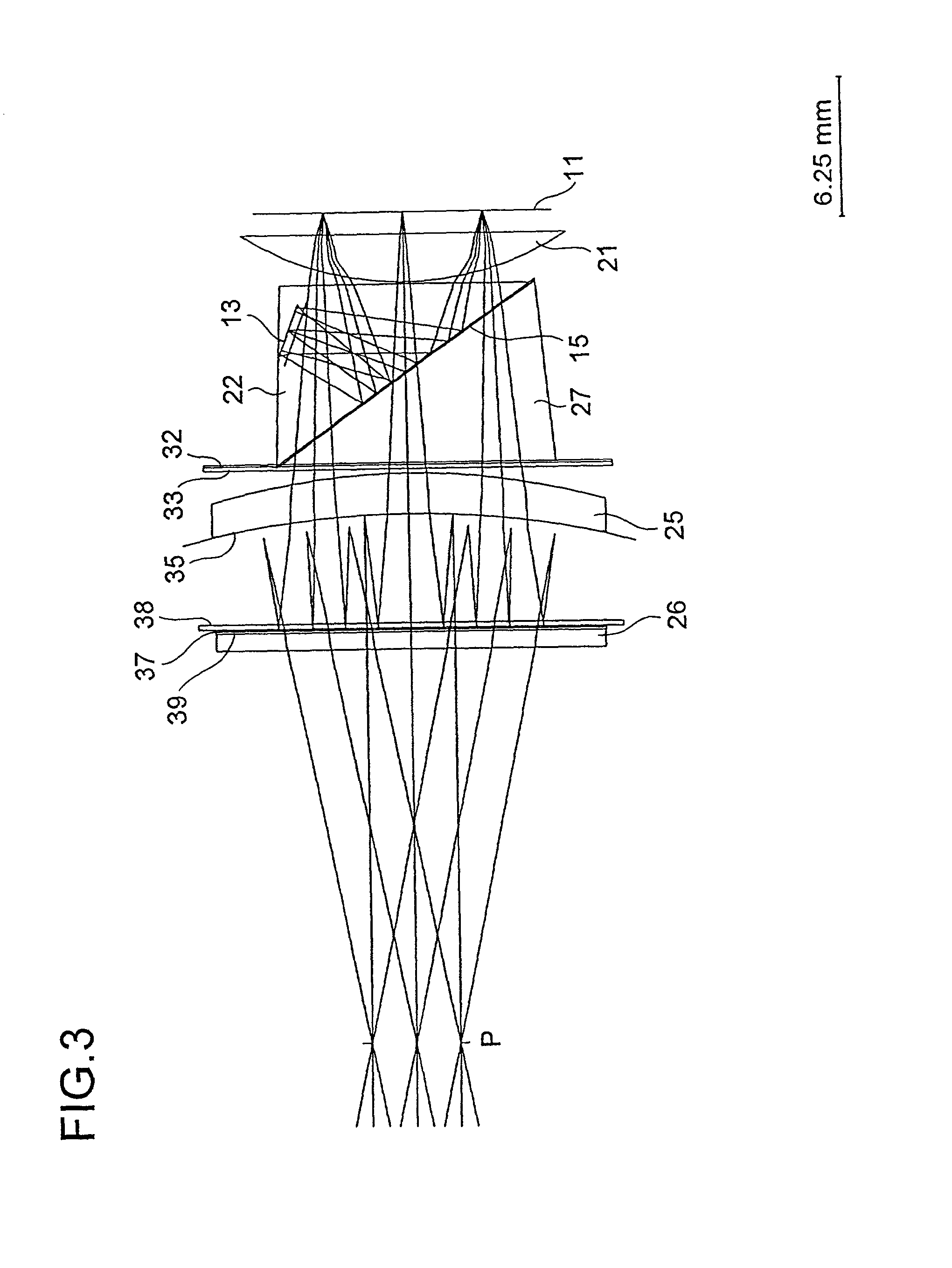Image display apparatus
a technology of image display and display screen, which is applied in the field of image display screen, can solve the problems of unduly large apparatus as a whole, inability to present the observer with a high-quality image (virtual image), and inability to make the block satisfactorily slim, etc., and achieves the effect of high-quality images and sufficient long eye reli
- Summary
- Abstract
- Description
- Claims
- Application Information
AI Technical Summary
Benefits of technology
Problems solved by technology
Method used
Image
Examples
example 1
PRACTICAL EXAMPLE 1
[0089]FIG. 3 shows the construction and optical path of a first practical example, and Table 1 shows the construction data thereof FIGS. 4 and 5 show the aberrations observed in this practical example. In the construction data, the surfaces are numbered in the order reverse to the direction in which the image light travels along its optical path. The refractive indices given are for light having a wavelength of 587.6 nm. These apply also to Tables 2 to 5 described later.
[0090]In this practical example, the focal length of the eyepiece optical system 12 as a whole is ft=18.000 mm, the focal length of the front portion 12a of the eyepiece optical system is fa=19.752 mm, the focal length of the rear portion 12b of the eyepiece optical system is fb=27.948 mm, and the distance from the rear end of the eyepiece optical system to the exit pupil is Epd=19.296 mm. Hence, fa / ft=1.097, and Epd / fb=0.690. The angle between the optical axis of the eyepiece optical system and a ...
example 2
PRACTICAL EXAMPLE 2
[0091]FIG. 6 shows the construction and optical path of a second practical example, and Table 2 shows the construction data thereof FIGS. 7 and 8 show the aberrations observed in this practical example.
[0092]In this practical example, ft=18.000 mm, fa=19.234 mm, fb=38.912 mm, Epd=26.809 mm, fa / ft=1.069, Epd / fb=0.689, and θ=35°. The prisms 22 and 27 are omitted.
[0093]The meniscus lens 25 has its convex surface (surface 11) formed as an aspherical surface, which is defined by expression (3) below.
Z=C·h2 / {1+[1−(1+K)·C2·h2]1 / 2 }+A4·h4+A6·h6+A8·h8+A10·h10 (3)
where Z represents the displacement along the optical axis Ax, C represents the curvature (the reciprocal of the radius of curvature), h represents the distance from the optical axis, K represents a conic constant, and A4 to A10 represent the coefficients for the terms of orders 4 to 10.
[0094]The aspherical surface of the meniscus lens 25 has the following coefficients: K=0, A4=−0.962037×10−4, A6=0.275900×10−5, A8...
example 3
PRACTICAL EXAMPLE 3
[0095]FIG. 9 shows the construction and optical path of a third practical example, and Table 3 shows the construction data thereof FIGS. 10 and 11 show the aberrations observed in this practical example.
[0096]In this practical example, ft=18.000 mm, fa=18.804 mm, fb=38.123 mm, Epd=14.818 mm, fa / ft=1.045, Epd / fb=0.389, and θ=35°. The prisms 22 and 27 are omitted.
[0097]The meniscus lens 25 is composed of a concave surface side portion 25a made of glass and a convex surface side portion 25b made of resin, and has its convex surface (surface 12) formed as an aspherical surface. This aspherical surface has the following coefficients: K=0, A4=0.147835×10−3, A6=0.811462×10−6, A8=−0.127597×10−7, A10=0.767565×10−10.
[0098]Moreover, the planoconvex lens 26 has its observation point P side surface (surface 1) formed as an aspherical surface. This aspherical surface has the following coefficients: K=0, A4=0.331917×10−4, A6=−0.159489×10−5, A8=0.188617×10−7, A10=−0.770228×10−10....
PUM
 Login to View More
Login to View More Abstract
Description
Claims
Application Information
 Login to View More
Login to View More - R&D
- Intellectual Property
- Life Sciences
- Materials
- Tech Scout
- Unparalleled Data Quality
- Higher Quality Content
- 60% Fewer Hallucinations
Browse by: Latest US Patents, China's latest patents, Technical Efficacy Thesaurus, Application Domain, Technology Topic, Popular Technical Reports.
© 2025 PatSnap. All rights reserved.Legal|Privacy policy|Modern Slavery Act Transparency Statement|Sitemap|About US| Contact US: help@patsnap.com



